Henry Quick cordless vacuum review – this cordless stick device is powerful for the price
The Henry Quick is Henry's first entry into the world of cordless stick vacuums. See how well it fared at our test center...
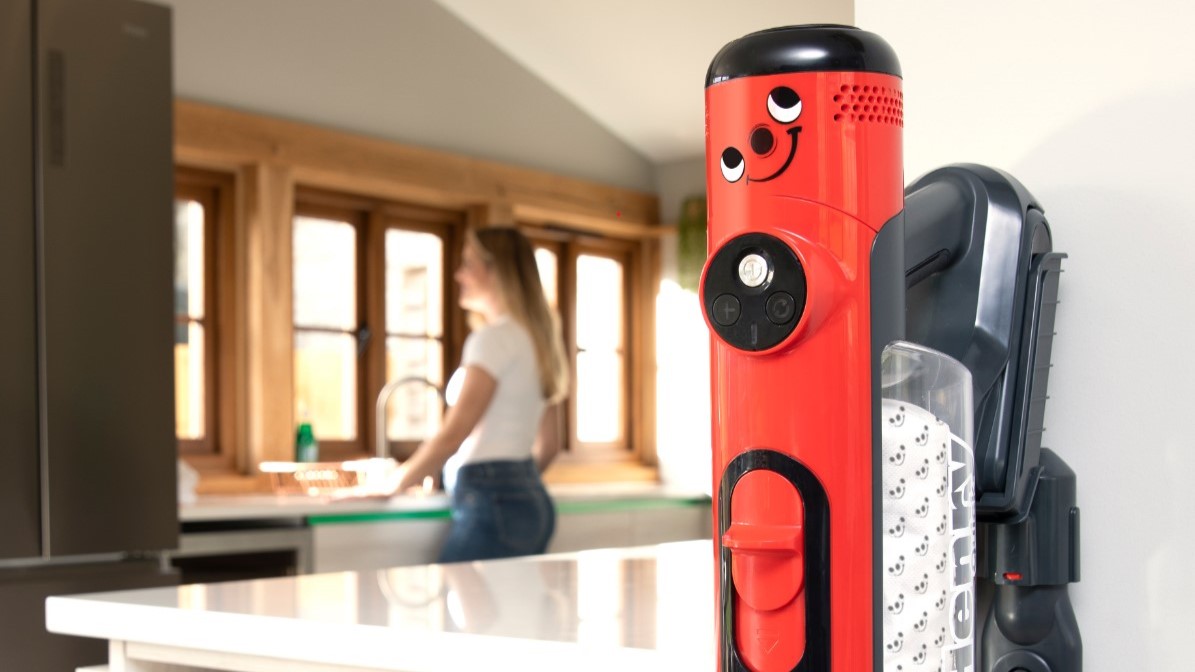
The Henry Quick offers genuinely impressive cleaning power at this price point. It may not be as powerful as the more expensive competition but, it's a reliable cleaner that always gets the job done, with the added convenience of dust-free, odorless emptying. Plus, it looks great
-
+
Powerful suction
-
+
Strong on all floor types, especially carpet
-
+
No hair wrap
-
+
Amazing value in the UK
-
+
Modern take on the Henry aesthetic
-
-
Recurring dust pod costs
-
-
LED floor head light doesn't do a lot
-
-
Expensive in the US
You can trust Homes & Gardens.
Those familiar with the Henry range might be a bit taken aback by the design of the Henry Quick. It's ditched the canister and is instead modeled similarly to the best cordless stick vacuums, complete with a wand and removable attachments.
But, the Henry face is still there, and the brand is now making its way into the world of cordless vacuuming. Famously known in the UK as making some of the best vacuum cleaners ever, this is our chance to see how well the Henry Quick performs compared to the vast amount of alternatives out there.
I'm Homes & Gardens' home tech editor, and I've spent hours rigorously testing vacuum cleaners to see whether they're worth the money. Read on for my analysis of the Henry Quick, and to discover all the ways it performs well, and where it falls short.

I tested the Henry Quick in our test center, using a variety of substances on three floor types (carpet, wood and linoleum) to see how effectively it can deal with at-home messes, including pet hair.
Henry Quick: Specifications
| Type | Cordless |
| Battery life | Up to 70 minutes (low) / Up to 16 minutes (high) |
| Charge time | 150 minutes |
| Power | 25.2 volts |
| Dustbin type | Pods |
| Pod capacity | 1 litre |
| Weight | 3.2 kilograms |
| Dimensions | 240 W x 270 L x 1220 H mm |
Henry Quick: Unboxing & setup
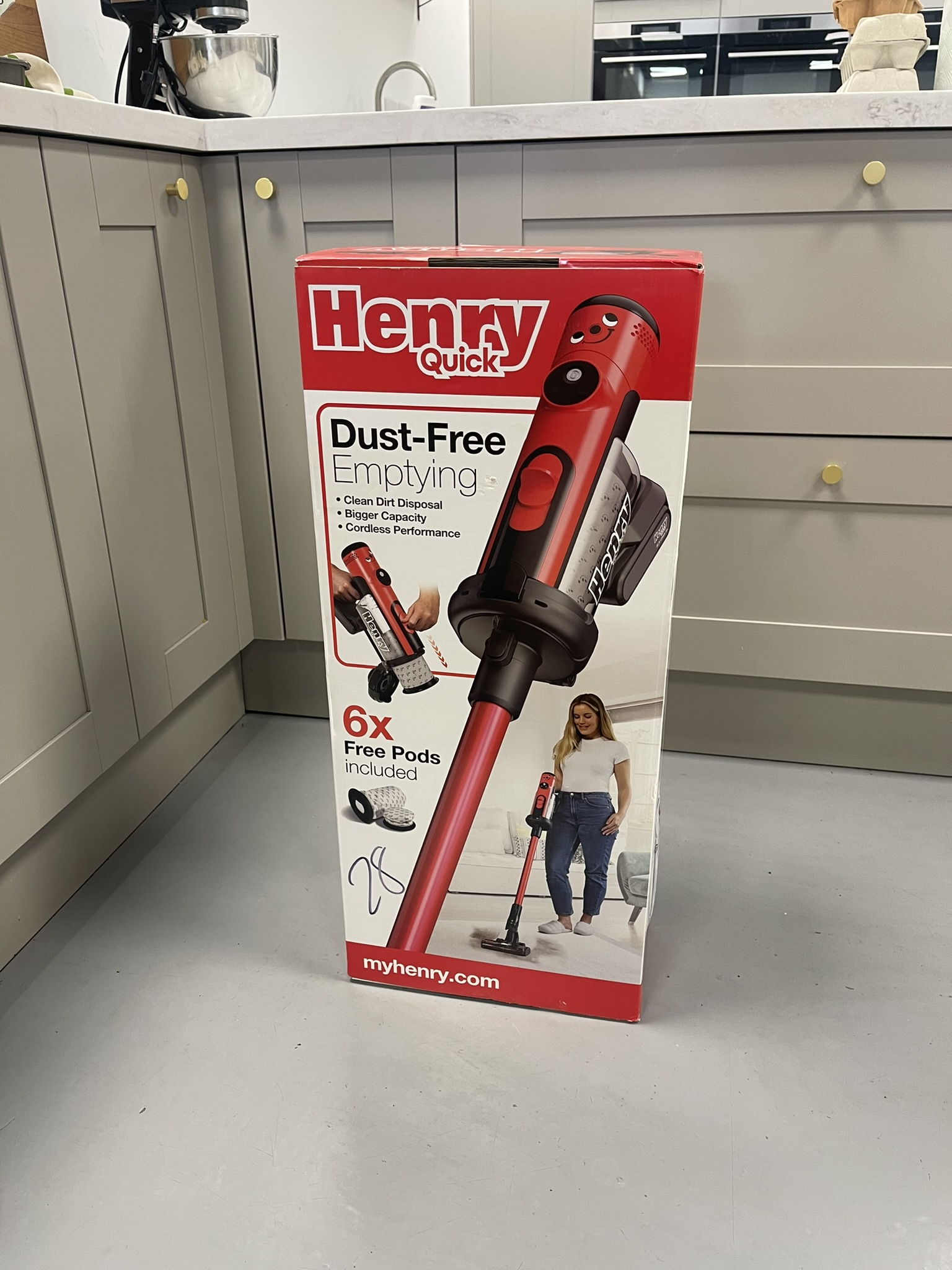
The Henry Quick package was an exciting one to receive. If, like me, you've lived in the UK for a long time, you'll likely have some fondness for Henry vacuums and their almost-ubiquitous presence across the country.
It arrived in its original packaging (as pictured above) with clear, simple text and images outlining what the vacuum can do.
The box includes a vacuum cleaner (housing the motor and dust pod), wand, floor head, crevice tool, combination tool, battery, charger, six dust pods, and wall mount parts.
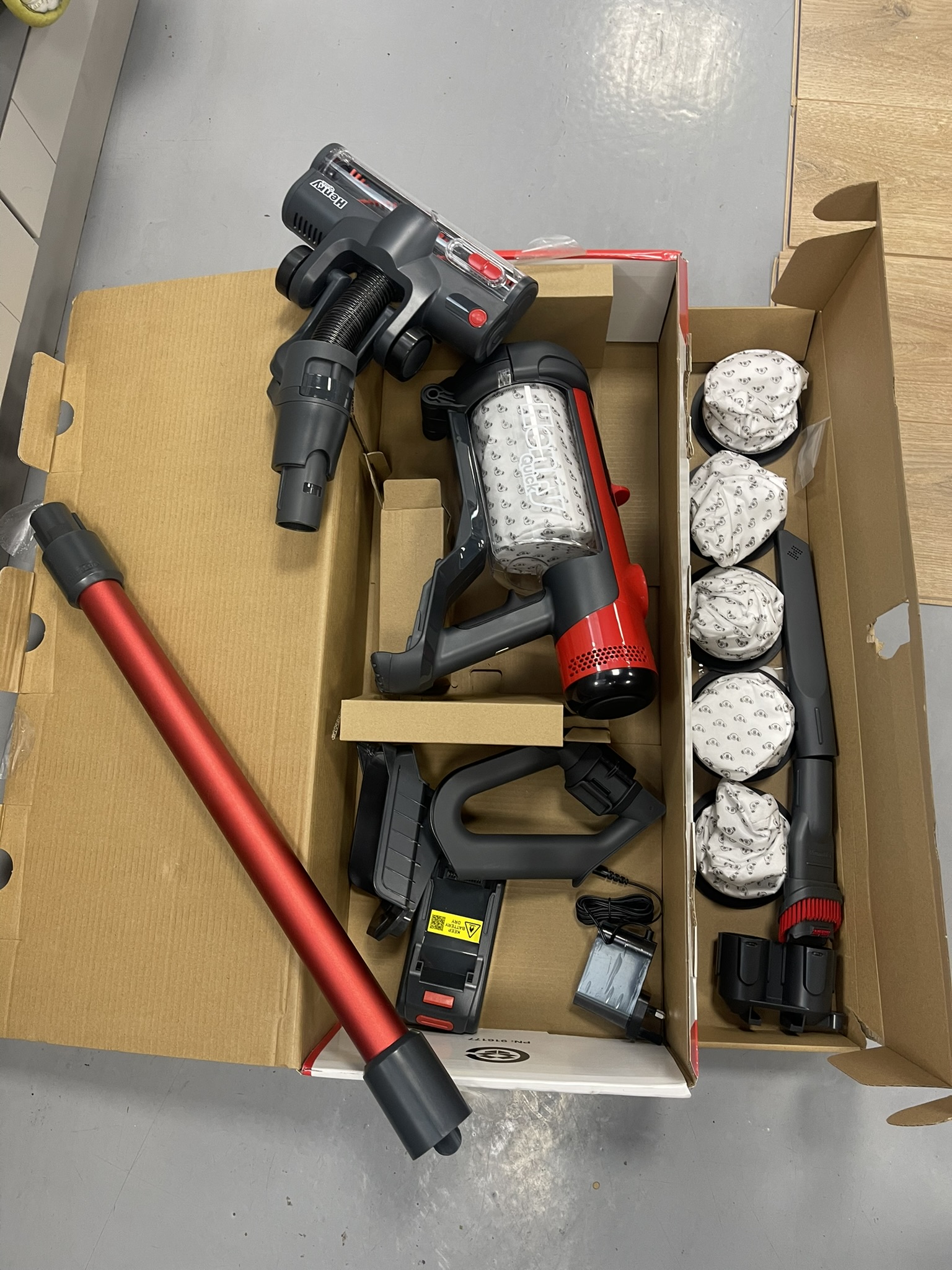
A little assembly is required to build the vacuum cleaner – just attach the wand and floor head. But before you can use the Henry Quick you'll need to charge the battery, and for me, this took the better part of two hours. You can charge the battery separately by removing it from the vacuum cleaner and slotting it into the charger.
Design expertise in your inbox – from inspiring decorating ideas and beautiful celebrity homes to practical gardening advice and shopping round-ups.
Henry Quick: Design & features
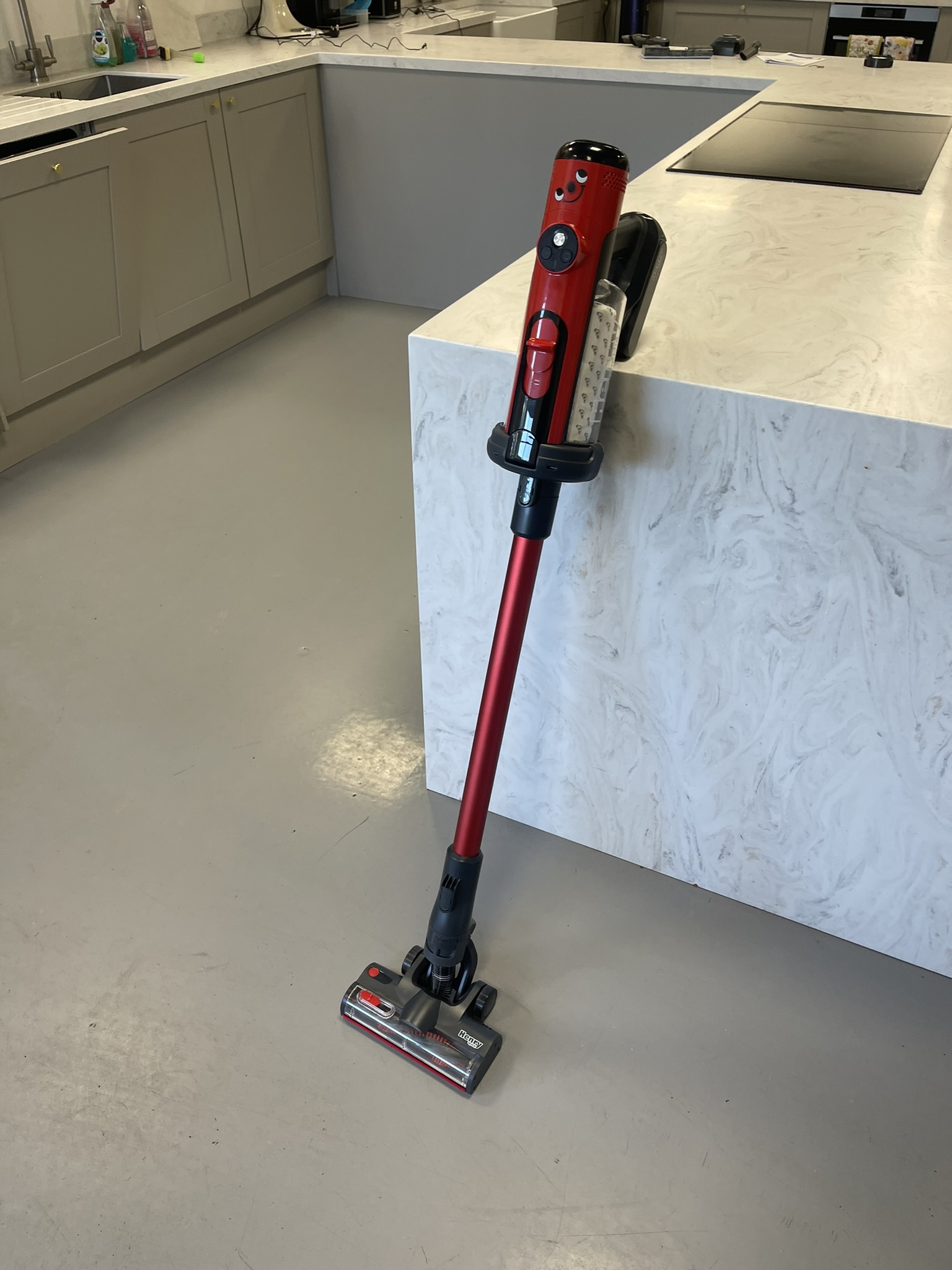
As their first cordless stick vacuum (they released the Henry Cordless, but that stayed true to the original canister design), I was happy to see that they've managed to make a stick vac look like a Henry. They even included a tube in the floor head, similar to the original models.
In a way, this is new territory for the brand. It's their first entry into the cordless stick world and they've decided that, rather than competing with the Dysons and Sharks, they'd create something different: a vacuum with dust-free emptying.
But rather than using a self-empty station, like many vacuum brands do to avoid messy dustbin emptying, the Henry Quick utilizes what is essentially a bagged vacuum system. Instead of a dustbin, the Henry Quick comes with disposable 'dust pods,' that will need emptying and replacing every time they're full.
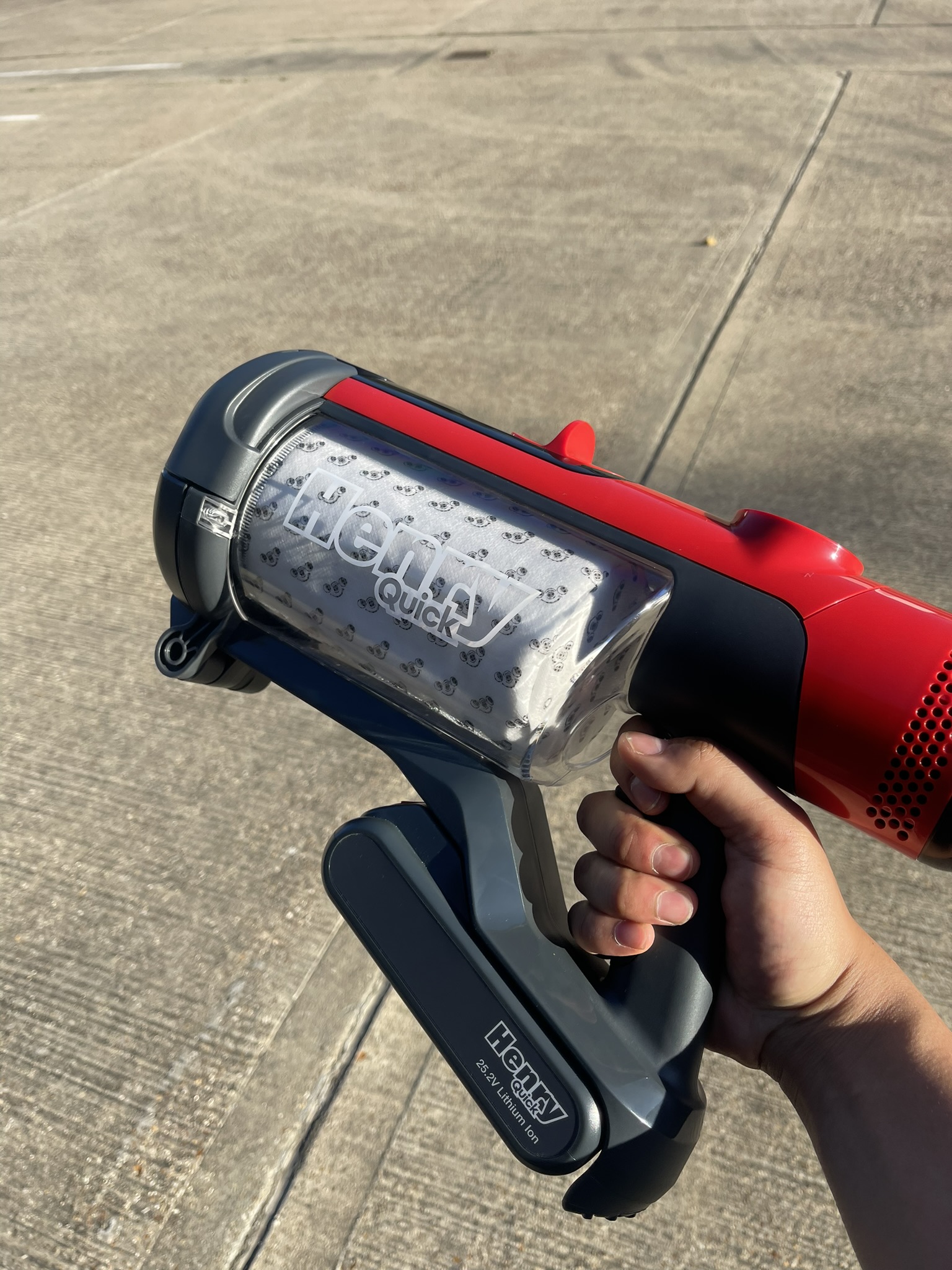
This comes with its own set of advantages and disadvantages. The immediate concern is running costs; most vacuum cleaners don't demand replaceable parts just to be able to use them. There's also the worry of running out, or that stocking up on an ample amount of pods will require storage space.
According to Henry, the pods will last up to three weeks, but it depends on how much you use them as they only need replacing when they're full (an LED light lets you know when). A pack of 10 pods costs £12.99 from Henry, and going off Henry's estimations, you'll need to replace the pod 17 times in a year, which is the equivalent of just under £26 a year. It's not much, but it's still more of a regular cost than with other vacuums.
But they do come with perks. The pod is the filter, so there's nothing to wash or fix as you continue to use the vacuum cleaner, and each time you use a new one your vacuum is at its best performance again. Alongside dust, the pod also traps odors in between uses.
The pods are also made of 65% recycled material and Henry carbon offsets the pods globally.
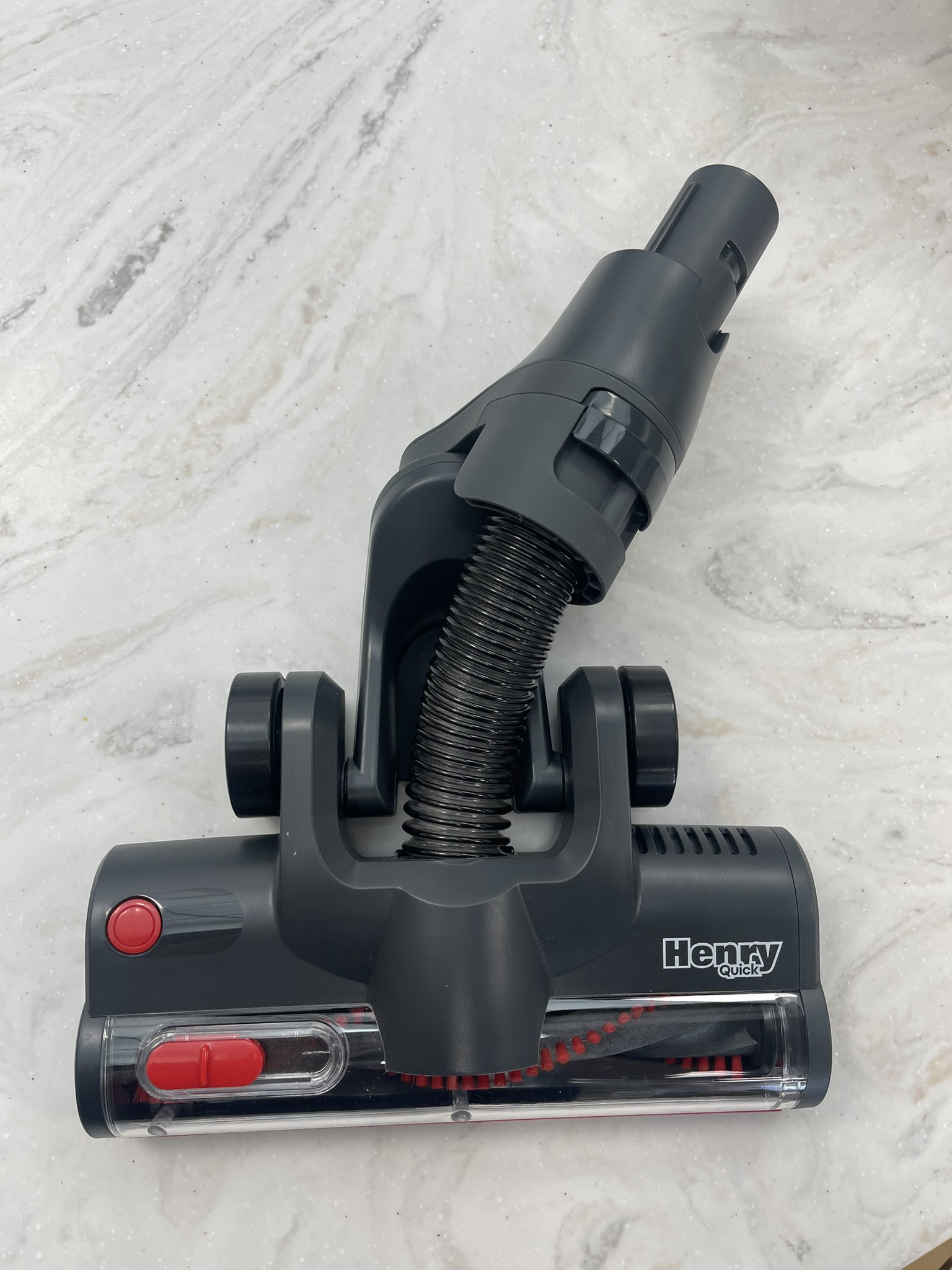
The Henry Quick is controlled using three buttons on the front of the vacuum. You can turn it on and off, activate boost mode, and turn the floor head rotation on and off. The latter is a handy feature if you ever need to save battery, and you know that the suction is powerful enough to clean the floors without the brush head needing to rotate.
The different attachments clip on and off, and you can omit the wand to use the Henry Quick as a handheld vacuum (ideal for furniture, stairs, cars...). You can also wall-mount the charging station, but as a renter, I wasn't able to do so.
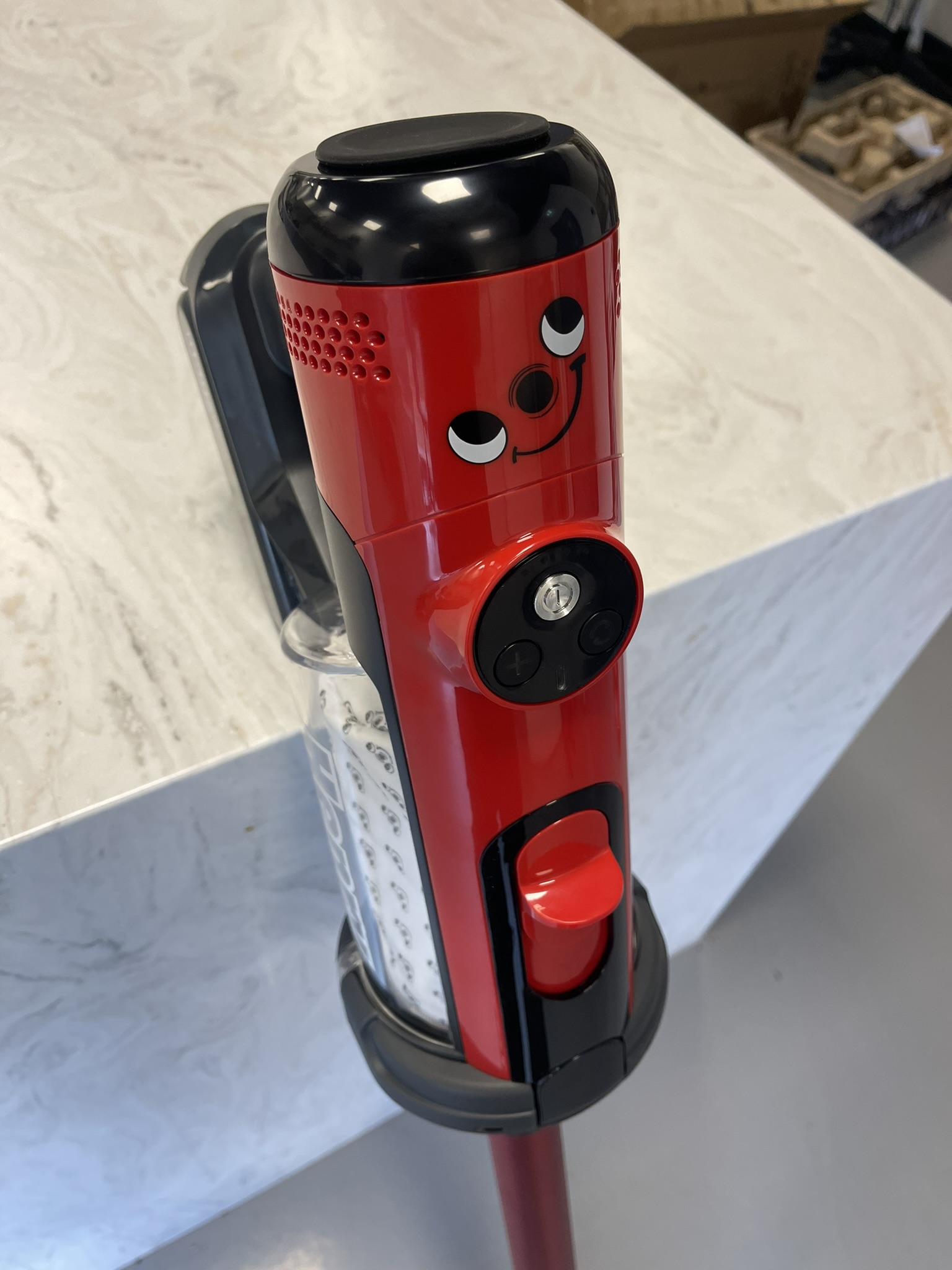
What is the Henry Quick like to use?
Aside from being a little heavier than other cordless vacuums I've tested, I was impressed by the Henry Quick pretty instantly. It has strong suction across different floor types and can easily pick up different-sized debris. The floor head is powerful, crushing up larger debris like cereal, and it stays clean while avoiding any hair tangle.
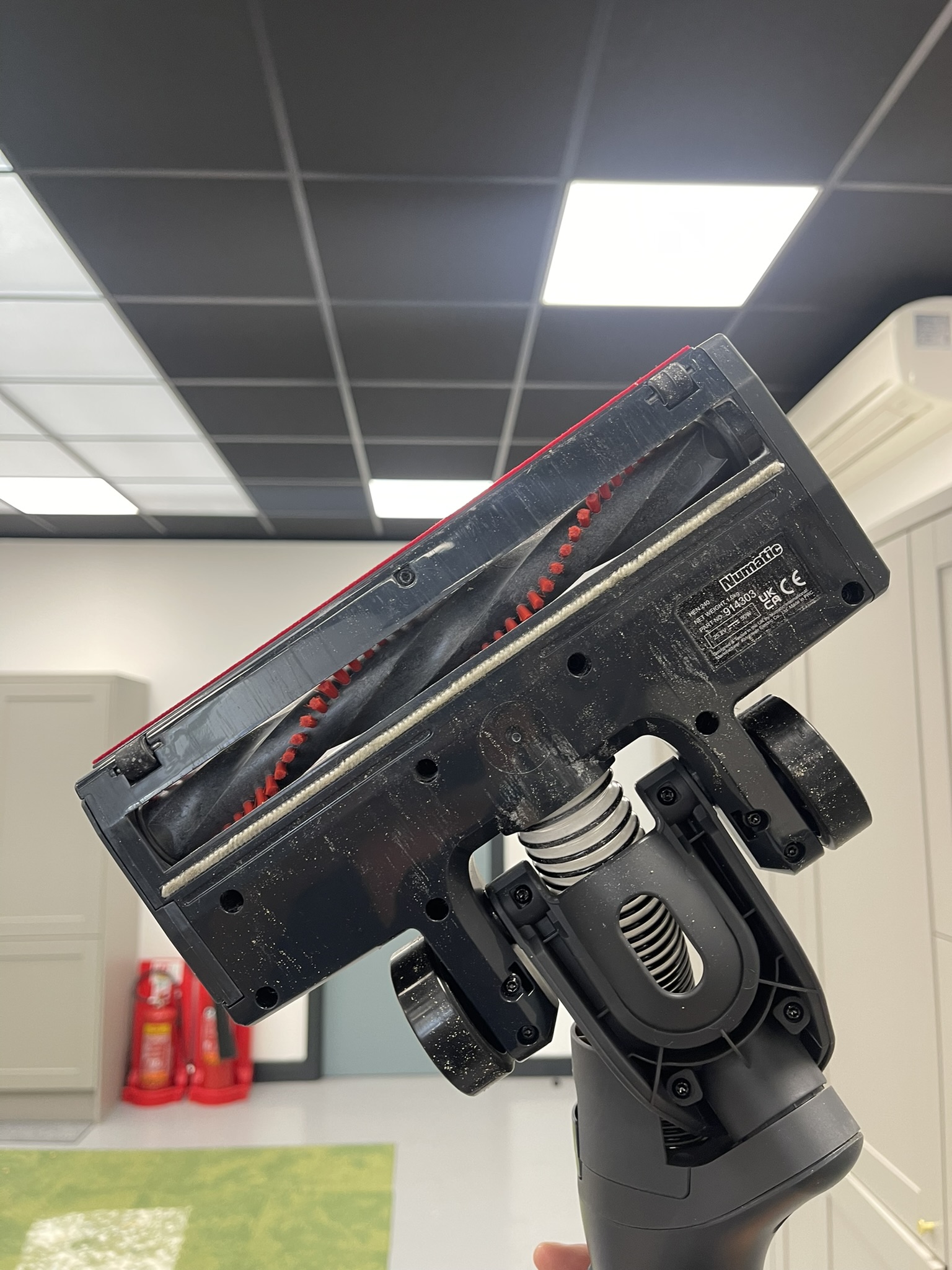
Boost mode is a great feature, and one that comes in handy when cleaning tricker messes or getting up to the floor's edges, but normal mode is still mostly powerful enough. There's no automatic detection however so you must manually switch it on when you need it, and it's worth mentioning that the buttons can't be pressed with the same hand.
I found that, when vacuuming on hard floors, there'd occasionally be a bit of friction when gliding across. This can be avoided by ensuring you stick to going back and forth, rather than trying to move the vacuum cleaner side to side like other vacuums can handle.
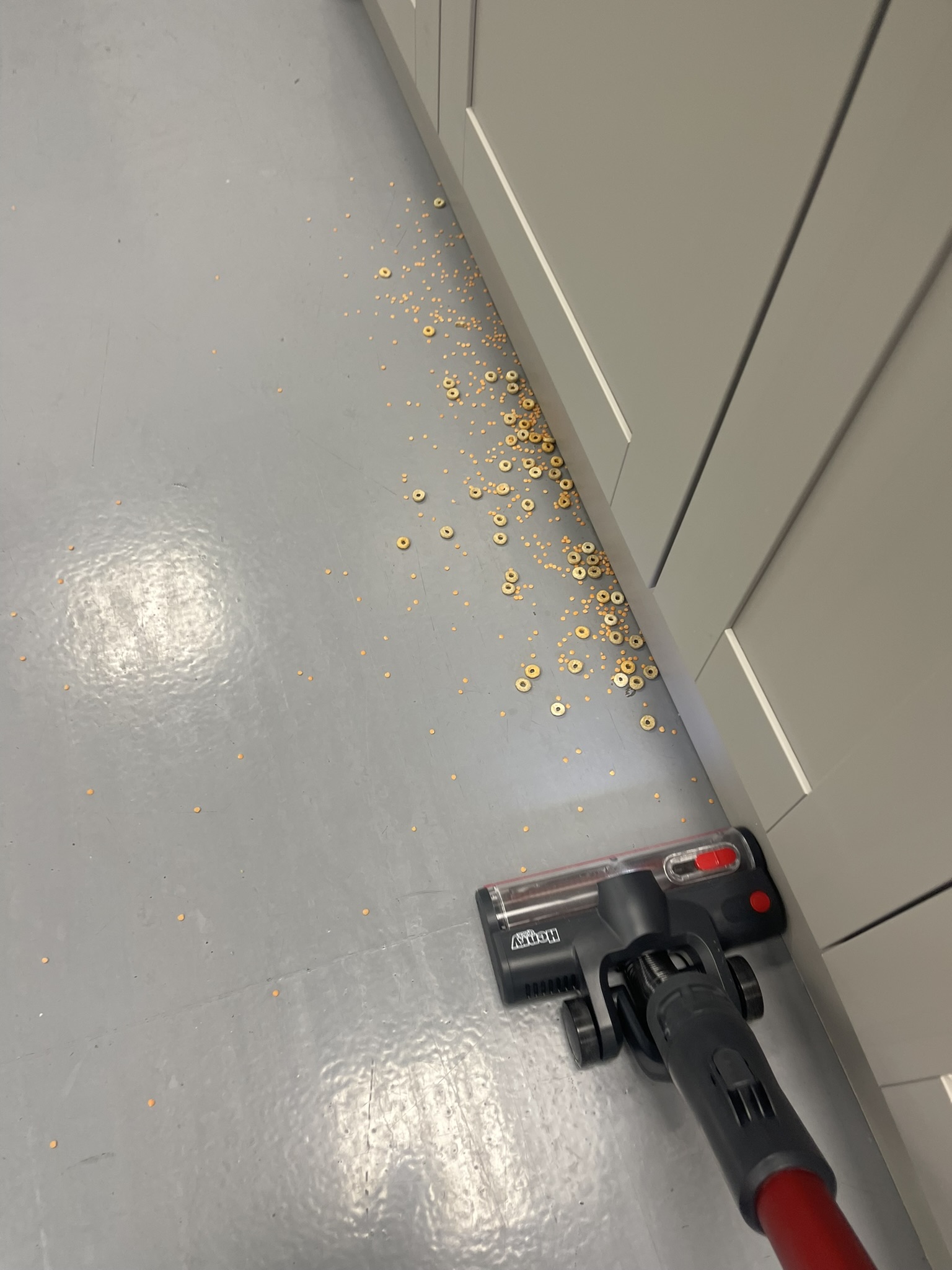
A slight let-down is the floor head's LED lights. Like many vacuum brands who've attempted to recreate Dyson's particle illumination tech (as seen in the Dyson V15 Detect), the Henry Quick has LED lights to illuminate what's on the floor.
However, the lights are positioned a bit too high to be able to effectively light up what's directly in front of the floor head. The only way I could see it being useful is if you're vacuuming in the dark (or perhaps under furniture), so it mostly seems like a wasted feature.
Henry Quick: Flour & sugar test
We test using flour and sugar as proxies for dust and dead skin, as well as being messes we'd find at home. Flour is also a clear visual test, as we can spot when it's left on the floor or stuck in any of the vacuum's parts.
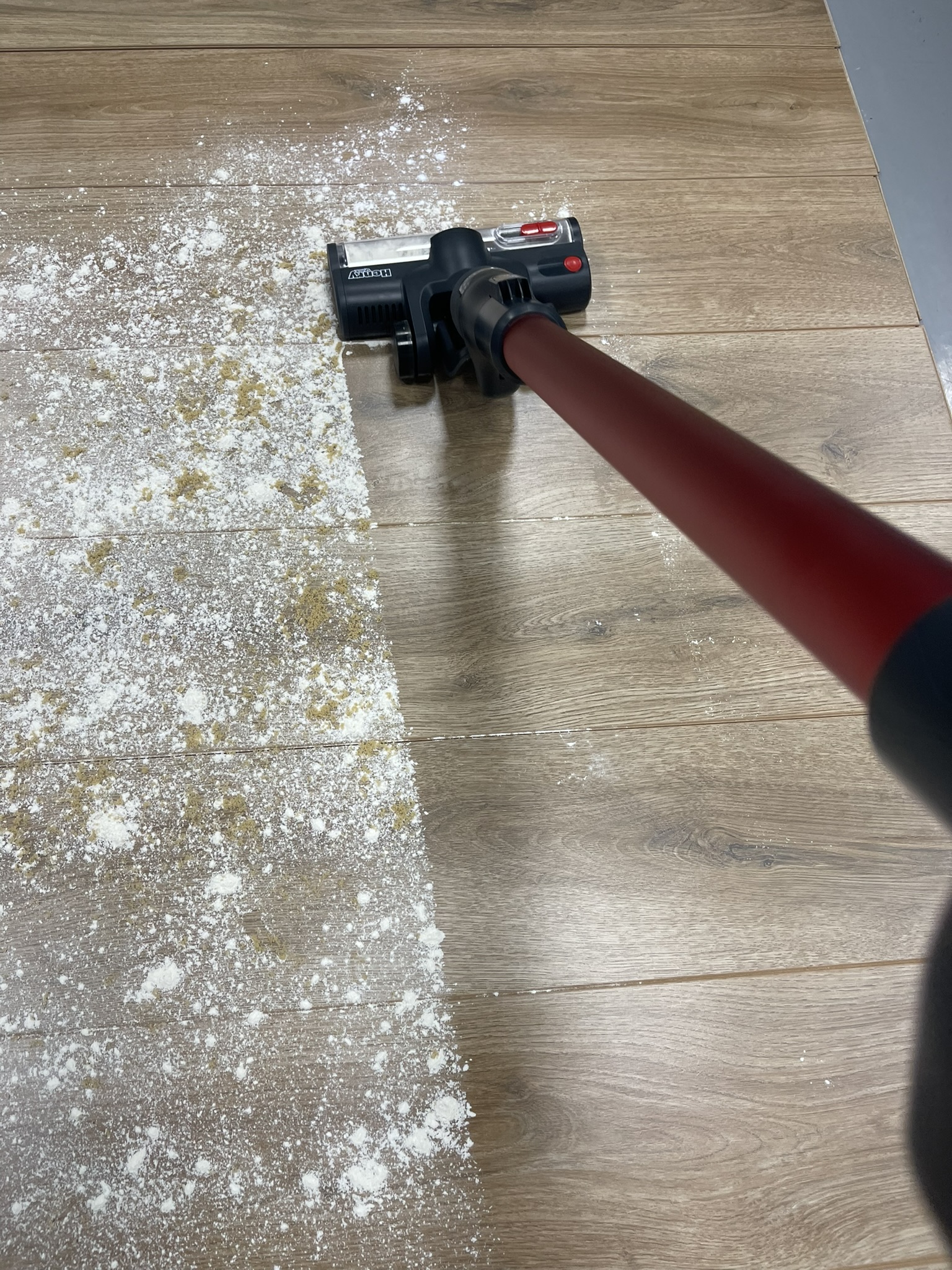
Hard floors (wood & linoleum)
On wooden floors, the Henry Quick was able to pick up everything except for some residue between the panels. This is where boost mode comes in handy; to clear the rest of the fallen particles in the cracks, I pressed the button, went over the cracks again, and everything was cleared away.
On linoleum, the Henry struggled a bit with flour that had stuck to the floor's grooves, but after the second or third run, everything was picked up easily. On both floor types, it was able to clear right to the edge without boost – it just needed a couple of runs.
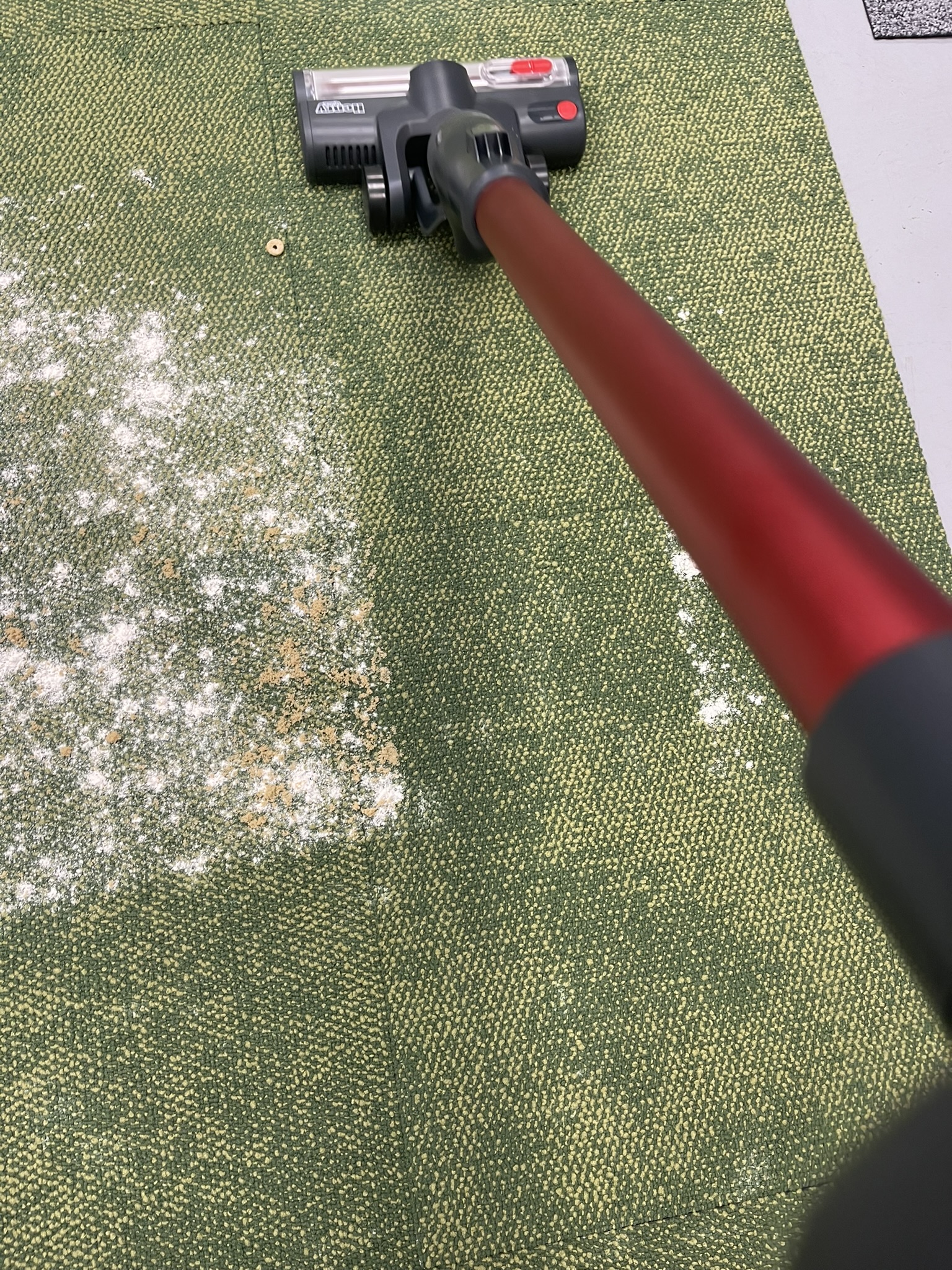
Carpets
The vacuum picked up dirt and debris well. Small amounts were left over from the first run that were then cleared after the second run. To recreate real at-home conditions, I left some flour and sugar for a few hours to get deeper into the carpet fibers, and the Henry Quick was able to pull it all out using boost mode.
The main floor head wasn't amazing when going to the carpet's edges, so I swapped it out for the crevice tool. Using boost, it was then able to pick up everything.
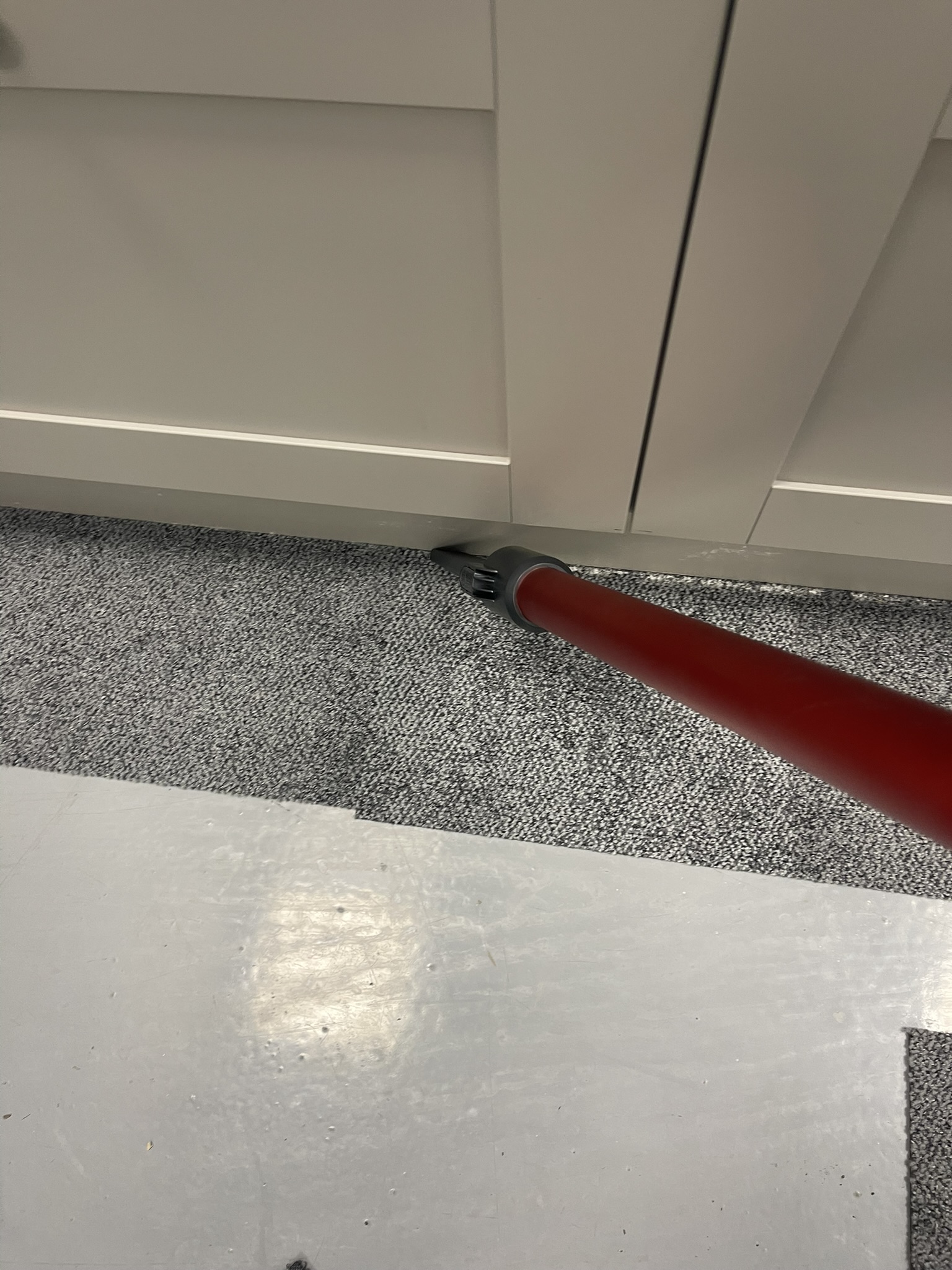
Henry Quick: Pantry test
Cereal and red lentils are great examples of the type of debris we'll find on our floors. Cereal (we use off-brand Cheerios) emulates large debris, while lentils are smaller with a texture that sticks to hard floors more easily.
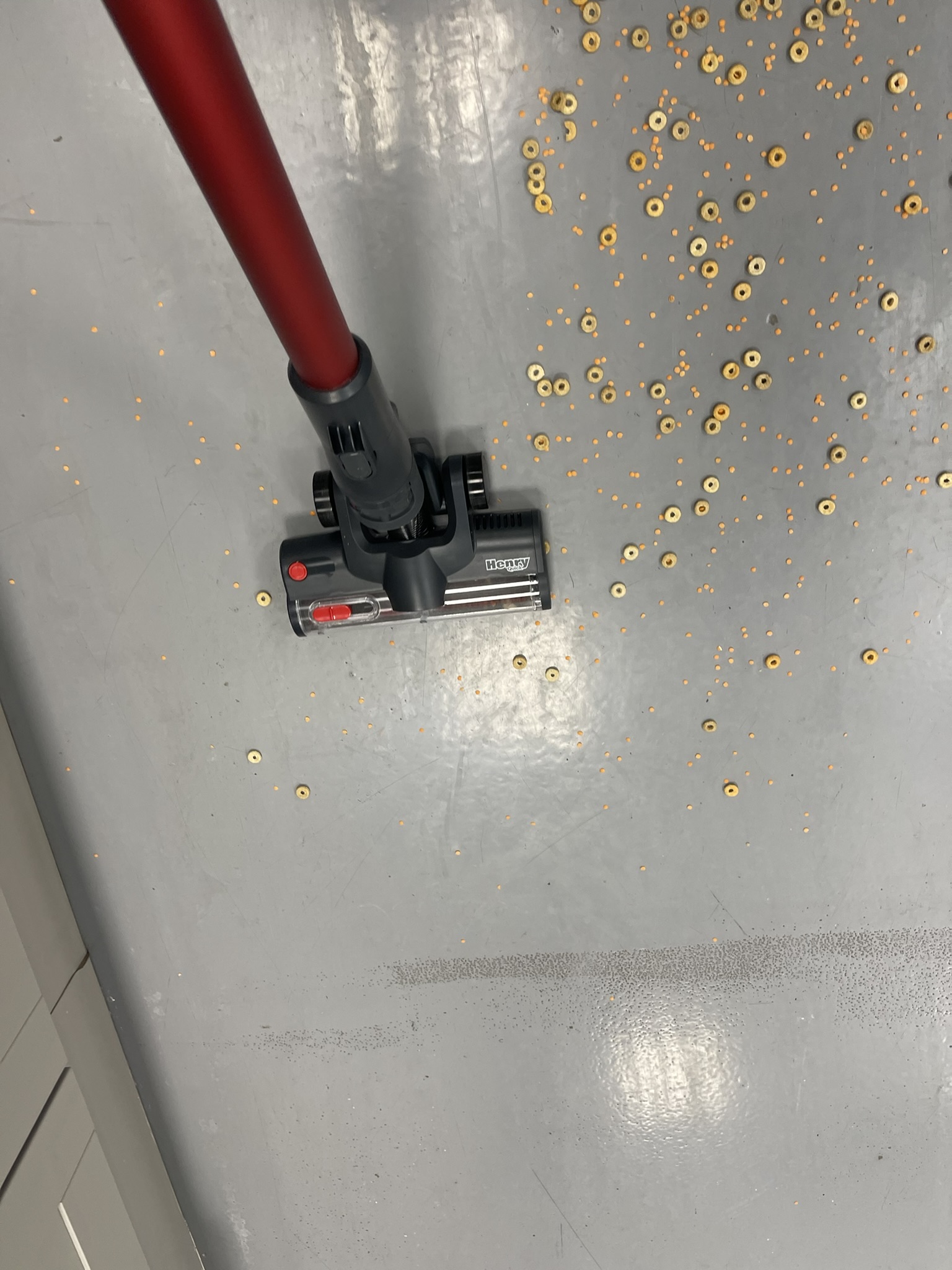
Hard floors (wood & linoleum)
Here's where it gets less straightforward. The floor head has a strong brushroll that spent a lot of time crushing down the cereal rather than picking it up straight away.
This helped to an extent, until it got to particularly dense patches where it couldn't crush everything down, and the vacuum was occasionally raised above the ground, gliding across the cereal. But in patches where there wasn't as much cereal on the floor (which, at home, is more likely), it handled the mess well, even up to the edges.
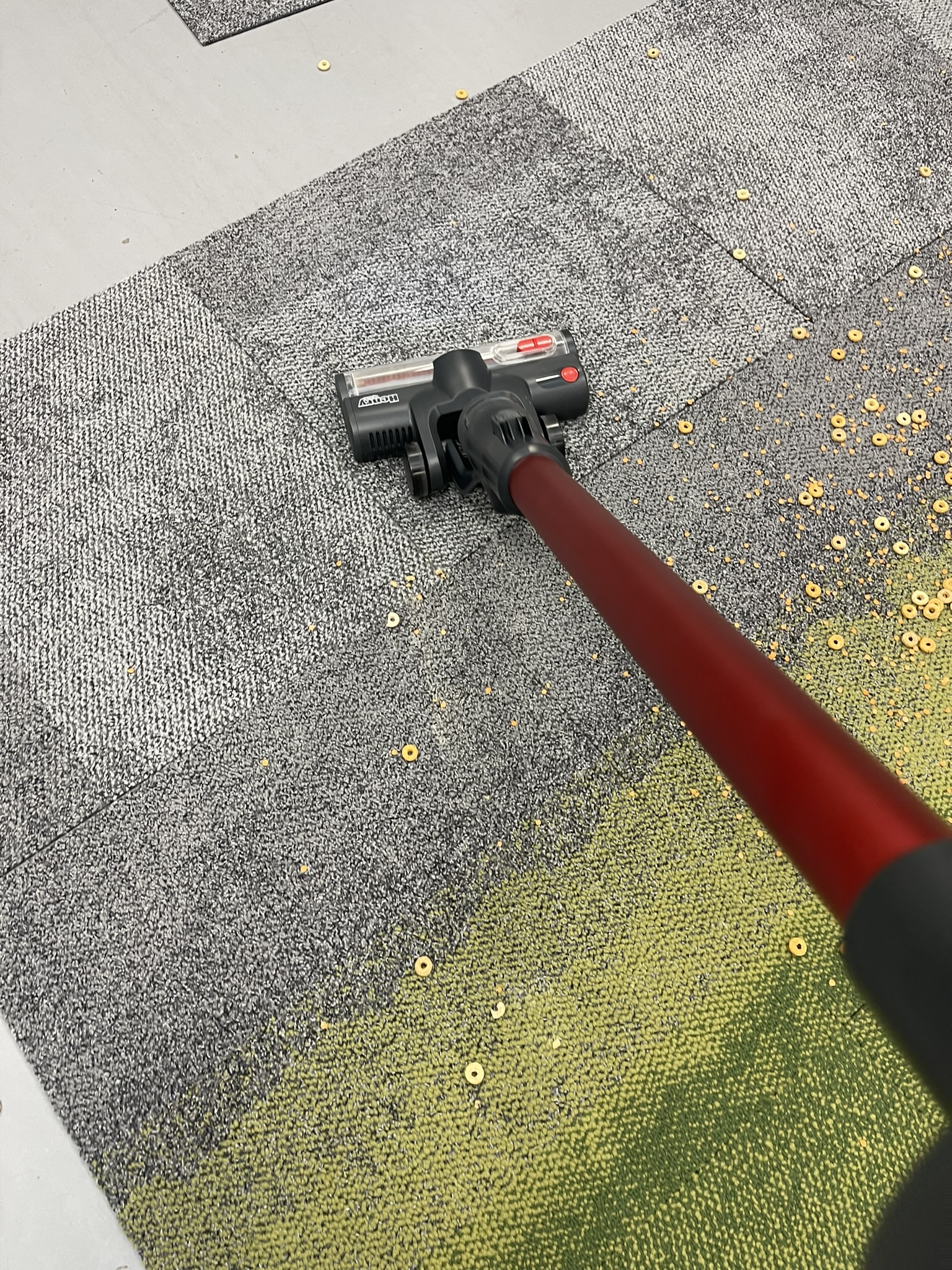
Carpets
Just like with flour and sugar, the Henry Quick had no trouble on carpets. It picked up pretty much everything on the first run, then the remains on the second or third. Again, the floor head's strong brush roll crushed down all the cereal rather than picking them up whole.
Henry Quick: Hair test
We chop up hair extensions to simulate pet hair, then spread them across wood, linoleum and carpet floors. We then try to push them as deeply into the carpet fibers as possible to recreate the conditions of homes with pets.
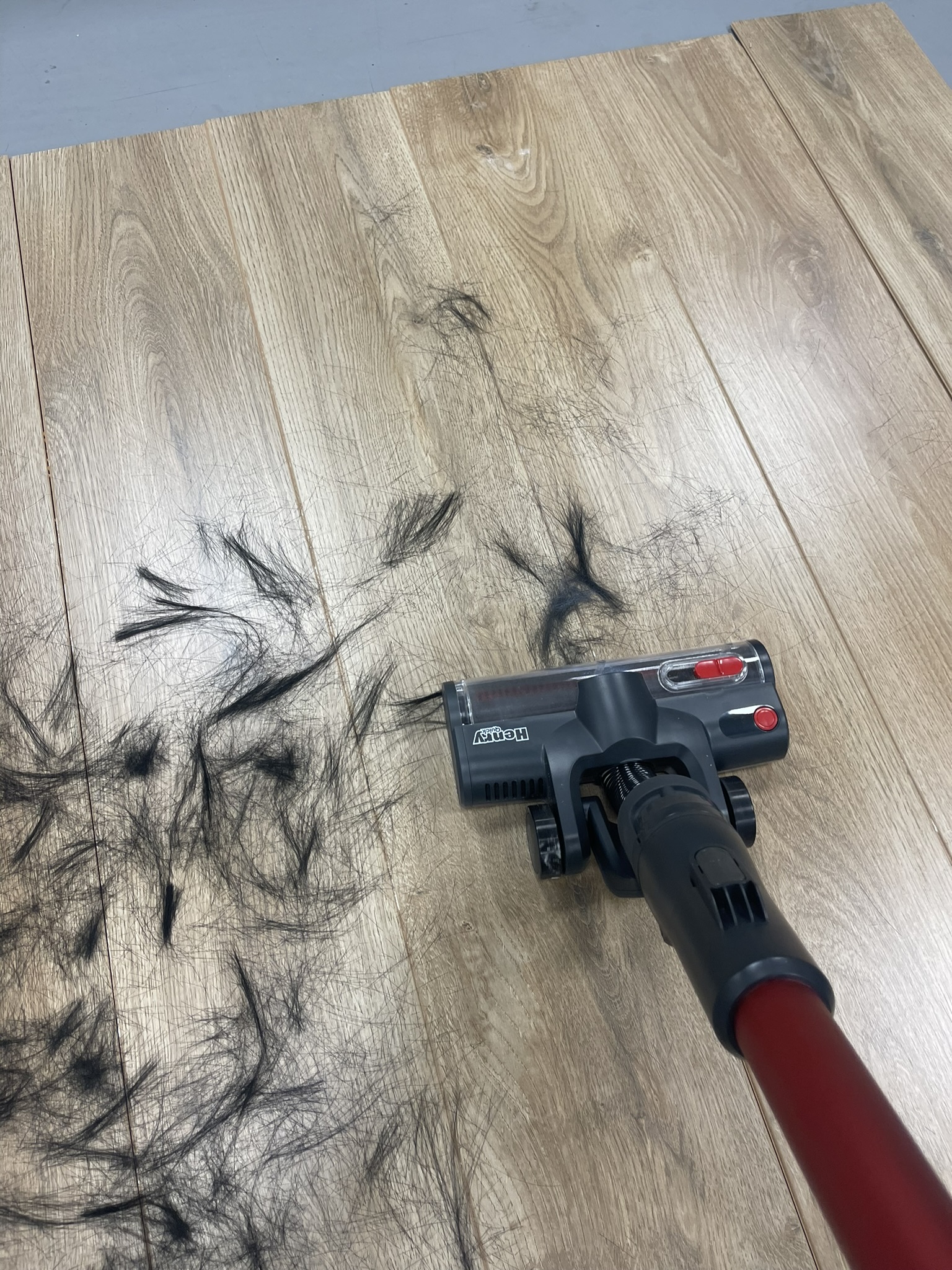
Hard floors (wood & linoleum)
The Henry Quick had no problem at all picking up all of the hair in one run. A few small strands were poking out of the brush roll but nothing was tangled, and most importantly, nothing came out of the brush roll when shaken. Everything that the vacuum picked up was properly picked up.
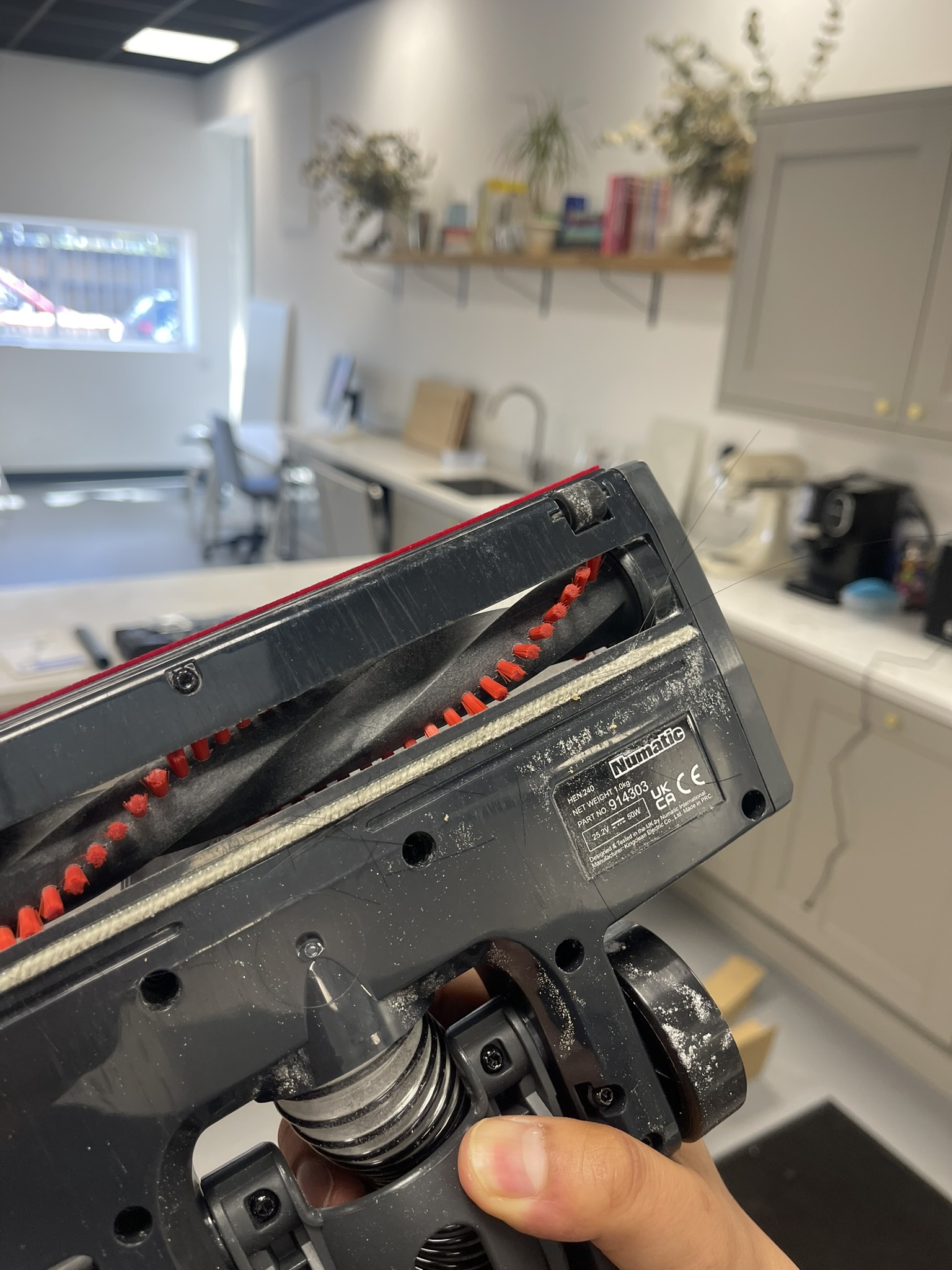
Carpets
Although it was pushed into the carpet, all of the hair was cleared in one run. The Henry Quick may be a strong contender for one of the best vacuums for pet hair, especially as the pods are odorless and trap allergens.
Henry Quick: Cleaning & maintenance
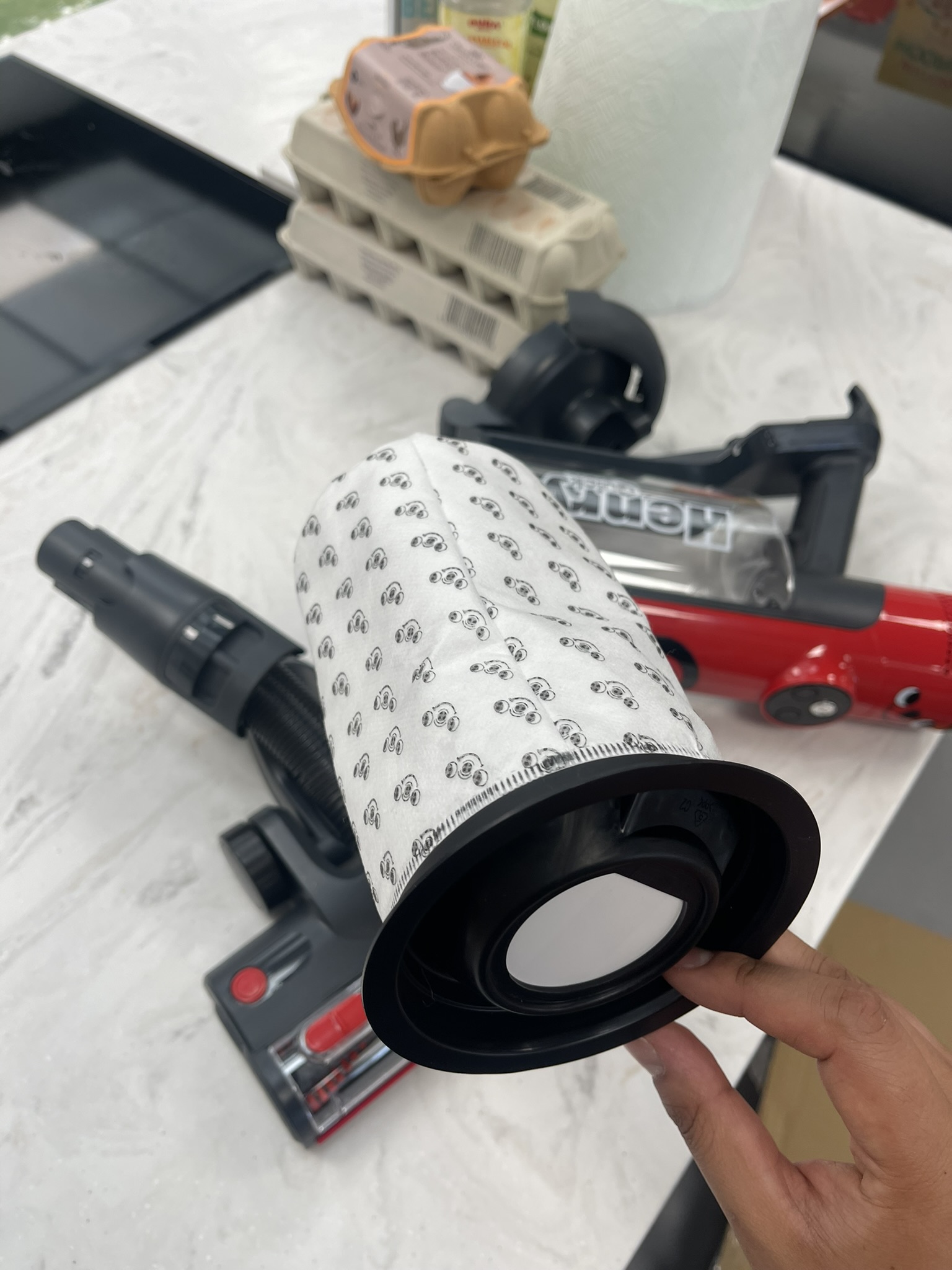
There's little effort needed in terms of cleaning and maintenance. The pod is the filter, so there isn't regular cleaning to be done. All you have to do is dispose of the pod once it's full and replace it with a new one.
Henry Quick: Price & availability
I reviewed the Henry Quick in the UK where it's currently listed at £249.99 at Henry, Amazon, Currys, and Argos, or £299.99 at John Lewis. The US model, however, is available at Amazon and CJ Miller for a whopping $599 - so those in the US unfortunately have to pay almost double the price.
This is likely because Henry vacuums are designed, tested, built, and packed in the UK. It's the only British mass-market vacuum brand that still produces its vacuums in the UK, now that Hoover and Dyson produce their products abroad.
How does the Henry Quick compare?
I tested the Henry Quick alongside the Dyson V12 Detect Slim, the Shark Cordless Detect Pro, the Tineco Pure One Station, and the Proscenic P11 Mopping. While the Dyson V12 was the best, the Henry Quick came the closest to matching its cleaning power.
While it didn't quite suck the debris or clear residue from cracks as quickly, it was the only other model that could be relied on to pick up everything in the end. This is impressive considering the Henry Quick's UK retail price is around half of the Dyson V12 Detect Slim's.
The Henry Cordless (the only other non-corded Henry) sells for £249.99, and it has a larger 6-liter capacity but a lower, 30-minute battery life. The original Henry vacuum cleaner can be bought for as little as £129.99 but doesn't have the freedom and flexibility of the Henry Quick.
Should you buy the Henry Quick?
Personally, although there are a few kinks to iron out first, I think the Henry Quick offers fantastic value for money. It's by no means perfect, but for a below-£300 vacuum cleaner, it's powerful, reliable, and durable. It shone particularly on carpets, but the performance was still strong across all floor types.
I would suggest considering the running cost of the dust pods, and weighing up whether the dust-free, odorless convenience is worth the £26 or so that you'd spend each year.
And if you live in the US, I wouldn't recommend this vacuum at a $500+ price point. For that cost, you could get a more premium and more capable alternative.
How we test vacuums
At Homes & Gardens, we have a dedicated and thorough procedure of how we test vacuums. At our test center, we test various substances on three floor types (carpet, wood, linoleum) to recreate real-life circumstances.
With no hair wrap and odorless pickup, the Henry Quick is a strong contender for the best vacuums for pet hair. It might not be as powerful as the best cordless vacuums that cost a great deal more, but it'll be hard to find a better alternative at this price point.
And while you're scoping out affordable vacuums, be sure to read through our guide of the best Dyson alternatives.

Dan is the Home Tech Editor for Homes & Gardens, covering all things cleaning, sound, smart home, and air treatment across the Solved section.
Having worked for Future PLC since July 2023, Dan was previously the Features Editor for Top Ten Reviews and looked after the wide variety of home and outdoor content across the site, but their writing about homes, gardens, tech and products started back in 2021 on brands like BBC Science Focus, YourHomeStyle and Gardens Illustrated.
They have spent more than 400 hours testing and reviewing vacuums, soundbars and air purifiers for Homes & Gardens.
Dan has a BA in Philosophy and an MA in Magazine Journalism. Outside of work, you'll find them at gigs and art galleries, cycling somewhere scenic, or cooking up something good in the kitchen.
